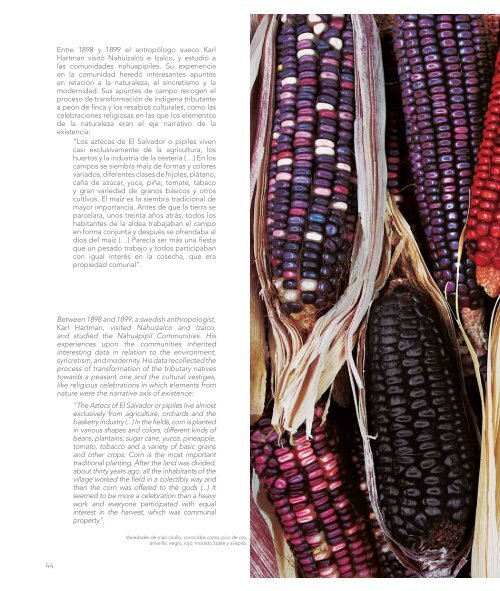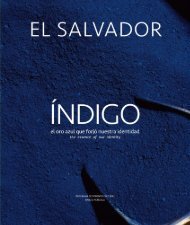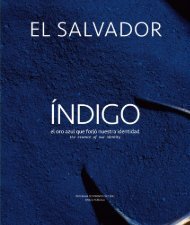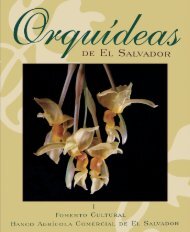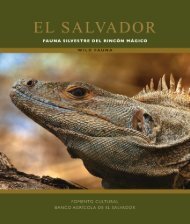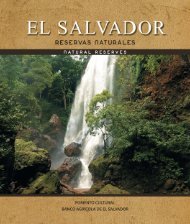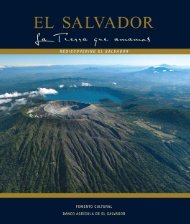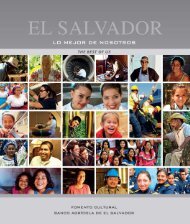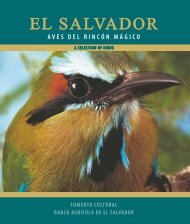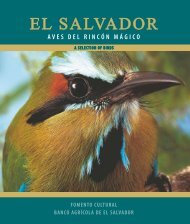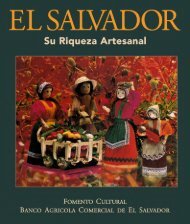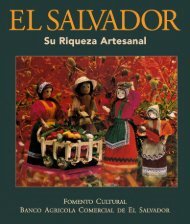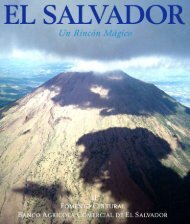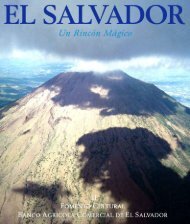Create successful ePaper yourself
Turn your PDF publications into a flip-book with our unique Google optimized e-Paper software.
Entre 1898 y 1899 el antropólogo sueco Karl<br />
Hartman visitó Nahuizalco e Izalco, y estudió a<br />
las comunidades nahuapipiles. Su experiencia<br />
en la comunidad heredó interesantes apuntes<br />
en relación a la naturaleza, el sincretismo y la<br />
modernidad. Sus apuntes de campo recogen el<br />
proceso de transformación de indígena tributante<br />
a peón de finca y los resabios culturales, como las<br />
celebraciones religiosas en las <strong>que</strong> los elementos<br />
de la naturaleza eran el eje narrativo de la<br />
existencia:<br />
"Los aztecas de El Salvador o pipiles viven<br />
casi exclusivamente de la agricultura, los<br />
huertos y la industria de la cestería (…) En los<br />
campos se siembra maíz de formas y colores<br />
variados, diferentes clases de frijoles, plátano,<br />
caña de azúcar, yuca, piña, tomate, tabaco<br />
y gran variedad de gra<strong>nos</strong> básicos y otros<br />
cultivos. El maíz es la siembra tradicional de<br />
mayor importancia. Antes de <strong>que</strong> la <strong>tierra</strong> se<br />
parcelara, u<strong>nos</strong> treinta años atrás, todos los<br />
habitantes de la aldea trabajaban el campo<br />
en forma conjunta y después se ofrendaba al<br />
dios del maíz (…) Parecía ser más una fiesta<br />
<strong>que</strong> un pesado trabajo y todos participaban<br />
con igual interés en la cosecha, <strong>que</strong> era<br />
propiedad comunal".<br />
Between 1898 and 1899, a swedish anthropologist,<br />
Karl Hartman, visited Nahuizalco and Izalco,<br />
and studied the Nahuapipil Communities. His<br />
experiences upon the communities inherited<br />
interesting data in relation to the environment,<br />
syncretism, and modernity. His data recollected the<br />
process of transformation of the tributary natives<br />
towards a peasant one and the cultural vestiges,<br />
like religious celebrations in which elements from<br />
nature were the narrative axis of existence:<br />
"The Aztecs of El Salvador or pipiles live almost<br />
exclusively from agriculture, orchards and the<br />
basketry industry (...) In the fields, corn is planted<br />
in various shapes and colors, different kinds of<br />
beans, plantains, sugar cane, yucca, pineapple,<br />
tomato, tobacco and a variety of basic grains<br />
and other crops. Corn is the most important<br />
traditional planting. After the land was divided,<br />
about thirty years ago, all the inhabitants of the<br />
village worked the field in a colectibly way and<br />
then the corn was offered to the gods (...) It<br />
seemed to be more a celebration than a heavy<br />
work and everyone participated with equal<br />
interest in the harvest, which was communal<br />
property".<br />
Variedades de maíz criollo, conocidos como: pico de oro,<br />
amarillo, negro, rojo, morado, tizate y avispita.<br />
44


